Parts of Speech
- What is a noun?
- A noun is a person, place, thing or idea
- What are some examples of nouns?
- Dancer (person)
- Street (place)
- Lamp (thing)
- Freedom (idea)
- How is a proper noun different?
- A proper noun is a noun that is specific to one person, place, thing or idea. In short, a proper noun is a name.
- Mrs. Etter (person)
- Winnetka (place)
- Snuggie (thing)
- What is a pronoun?
- A pronoun is a word that takes the place of a noun in a sentence.
- What are some examples of pronouns?
- What does that look like in a sentence?
- Mrs. Etter went to lunch.
- She went to lunch.
- What is a verb?
- A verb is a word that identifies an action, movement or state of being.
- What are some examples of verbs?
- What about the forms of “to be”? Example: is, was, were & are.
- Yes, these are verbs. They all describe a state of being and are therefore verbs
- Example: Sam is nice
- What about odd ones like “will”, “shall”, “could”, “would”, “must”, “may”, “might”, etc?
- Yes, these are also verbs. They are called “modal verbs” and are usually seen helping another verb along.
- Example: I think we will go to the party.
- What are the verbs in this sentence?
- What is an adjective?
- An adjective is a word that modifies or describes a noun. In other words, it is a word that makes a noun more specific.
- What are some examples of adjectives?
- Which of the following words are adjectives?
- The dancing, purple dog sat beside his house
- What is an adverb?
- An adverb is a word that is used to modify (further describe) a verb, adjective or other adverb.
- What are some examples of adverbs?
- Which of the following words are adverbs?
- The sun often rises above the extremely green horizon, very rapidly casting an orange glow over the world.
- What is a preposition?
- Shows a relationship, often physical, spatial or concerning time, between two nouns or pronouns in a sentence.
- What are some examples of prepositions?
- Which of the following words are prepositions?
- The cat went to the store. The store was past the park. He passed over the bridge on his way.
Preposition
- What is a conjunction?
- A word that is used to join words, phrases or clauses.
- What are some examples of conjunctions?
- Which of the following words are conjunctions?
- The hunter and his friend went camping because they enjoy the outdoors. They paid for the campsite ahead of time so that they could reserve it. It was either that or just show up and hope for the best.
Conjunction
- What is an interjection?
- An interjection is a single word that is used to express emotion. It is usually separated from the sentence by an exclamation point or a comma.
- What are some examples of interjections?
- Which of the following words are interjections?
- Ow! You stepped on my toe!
- Eek! I saw a mouse!
- Hey, do you know when class starts tomorrow?
interjection
- What is an article?
- An article is a word that identifies or specifies a noun. It proceeds the noun in a sentence.
- What are some examples of articles?
- There are only three articles:
- Which of the following words are articles?
- The cat sat beside a river and caught a fish.
Identify each word in the sentence by its correct part of speech
The cat ran quickly down the stairs
Article noun verb adverb preposition article noun
What parts of speech do we have here?
Beside the lake sat the beautiful princess.
Preposition article noun verb article adjective noun
Carol and Lisa were laughing at his haircut.
Proper noun conjunction proper noun verb verb preposition adjective noun
Ugh! You are so mean!
Interjection Pronoun verb adverb adjective
The very angry teacher slammed her books on the table.
Article adverb adjective noun verb adjective noun preposition article noun
Who was spreading that rumor?
Pronoun verb verb adjective noun
Everyone went to the party but me.
Pronoun verb preposition article noun conjunction pronoun.
My house is between the slowly flowing river and the school.
Adjective noun verb preposition article adverb adjective noun conjunction article noun
Someone was calling your phone.
The black car was somewhat noisy and old.
Article adjective noun verb adverb adjective conjunction adjective.
She was standing against the wall.
Pronoun verb verb preposition article noun
What are we having for dinner?
Pronoun verb pronoun verb preposition noun
They always arrive before noon.
Pronoun adverb verb preposition noun
She and I went to the store on Tuesday.
Pronoun conjunction pronoun verb preposition article noun preposition Proper noun
I had a very scary dream about you.
Pronoun verb article adverb adjective noun preposition pronoun
Jenny nor Sally could come to the dance.
Proper noun conjunction proper noun verb verb preposition article noun.
We sometimes go there after school.
Pronoun adverb verb noun preposition noun
- Skip to main content
- Skip to primary sidebar
Second Grade teachers! Join me Around the 2nd Grade Kampfire on Facebook! JOIN HERE
- Facebook Group
- Search this website
Around the Kampfire
Elementary Teaching Blog
Last updated by Chelsea Swiecinski on December 9, 2022 • Leave a Comment

Parts of Speech PowerPoints That Are Interactive & Fun
How to teach parts of speech in a fun and engaging way? Start with interactive lesson visuals! In this post I’ll share several parts of speech PowerPoints make teaching grammar both easy and fun. Take a look at these easy to use lesson slides and think about how you can use them in your lessons!
Parts of Speech PowerPoints
The more activities to teach parts of speech , you have in your teacher toolkit the better. Students need a variety of ways to practice grammar skills.
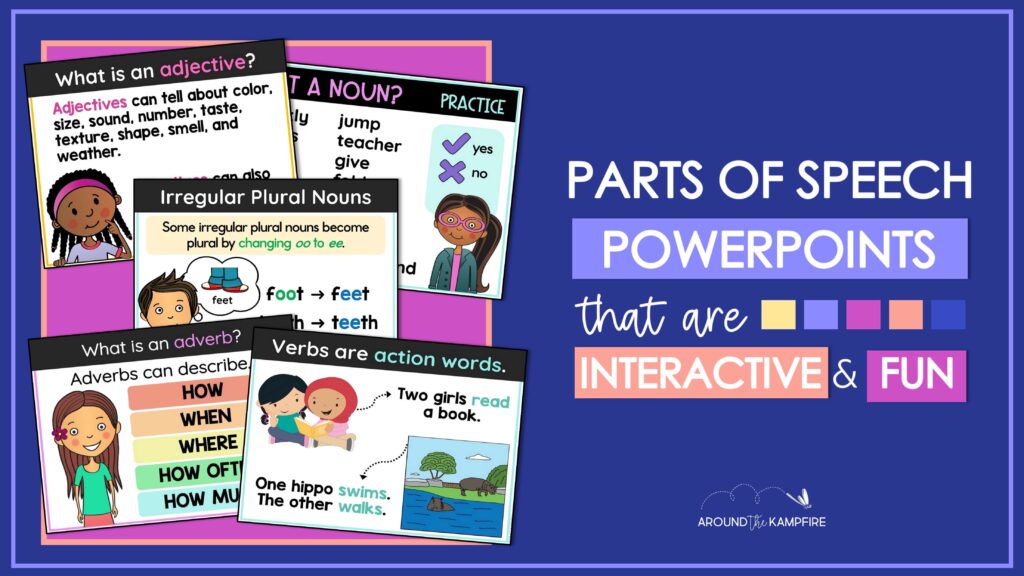
15-Minute Mini-lessons
At the beginning of each week of grammar lessons, I introduce a new part of speech in a brief and direct mini-lesson. In this mini-lesson, I model the skill we are focusing on for the week.
I use the lesson slides in the PowerPoints to introduce the grammar skill and provide examples. These guide students through the mini-lesson by providing examples and show how the target part of speech is used in context.
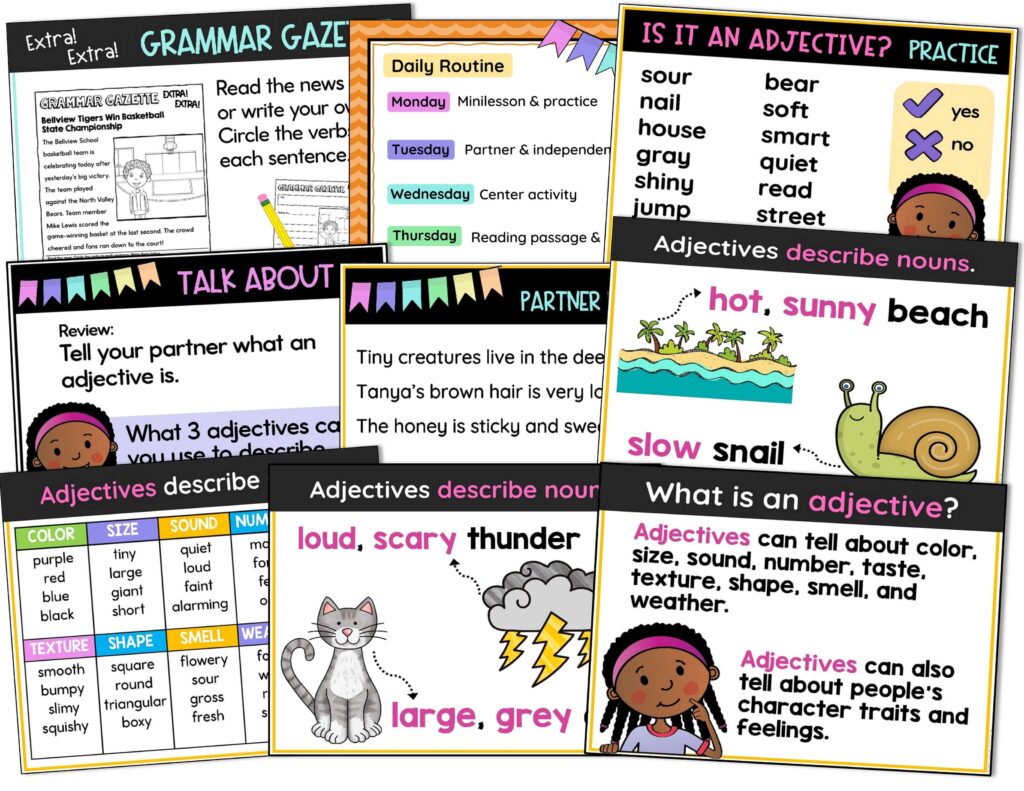
Short, targeted mini-lessons easily fit into your schedule and are most beneficial to young students when they are direct and clear. Students can fully focus on one specific skill, see examples, generate their own examples and then practice independently in writing or or with the game slides.
Interactive Slides Make Practicing Fun
Interactive slides allow students to truly participate and are an essential component to my parts of speech PowerPoints. The interactive practice slides have moveable parts that can be manipulated by students for practice or used by teachers to model the lesson.

Include Partner Work
Partner work is important and helpful in the elementary classroom. It keeps students engaged and accountable and allows them to teach and learn from one another. Explaining to a partner what they’ve just learned reinforces their understanding and helps to build oral language and social skills.
Each parts of speech PowerPoint includes opportunities for students to work with a partner using the turn-and-talk and partner practice activities.
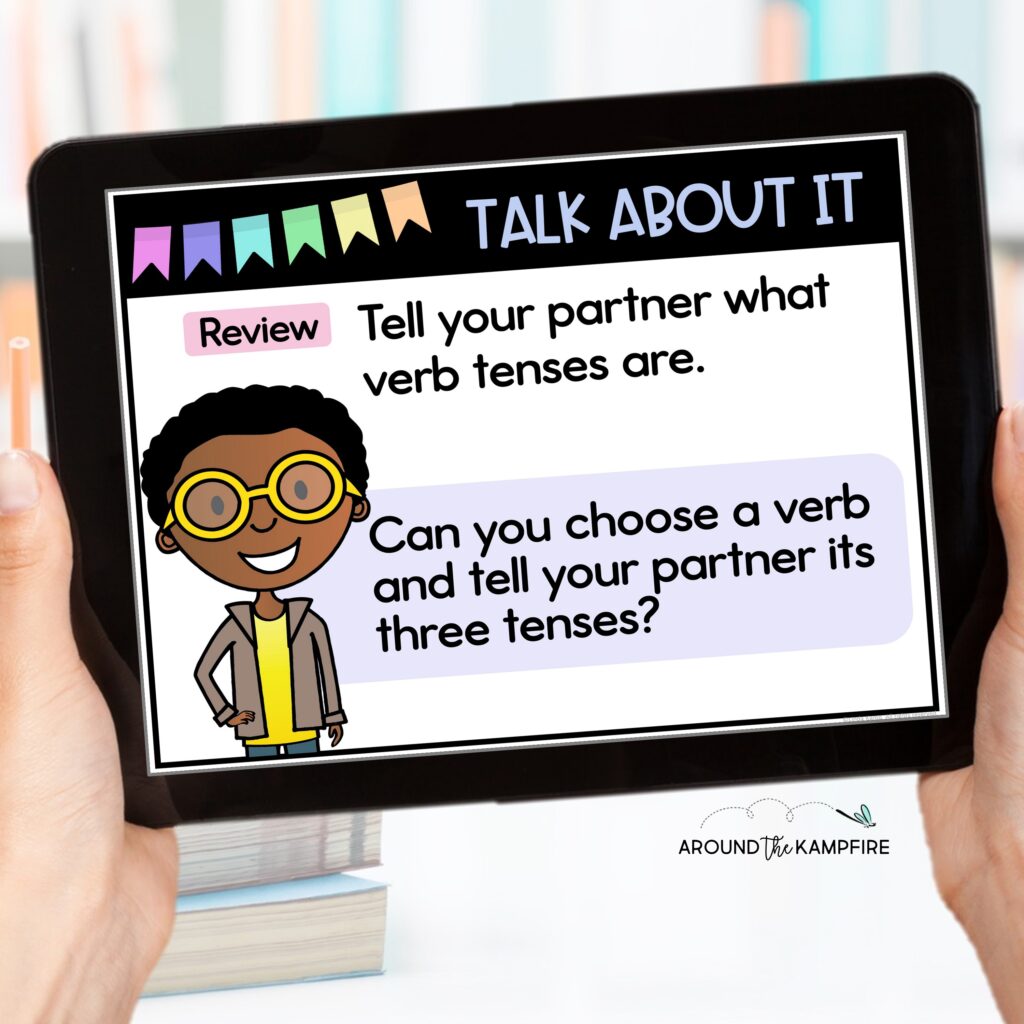
Parts of Speech PowerPoints & No-Prep Activities
These PowerPoints are part of a complete series of second grade grammar units . Each unit includes lessons and activities that are no-prep, ready to use, and easy to implement.
Each grammar unit includes everything you need to teach, practice, and assess all 2nd grade grammar and language skills and standards in just 15 minutes or less each day.
Click HERE to see the yearlong series of second grade grammar units available separately or in money-saving bundles.

These interactive grammar lessons will engage your students and make learning parts of speech fun!
Pin this post for later so you have it when you plan.
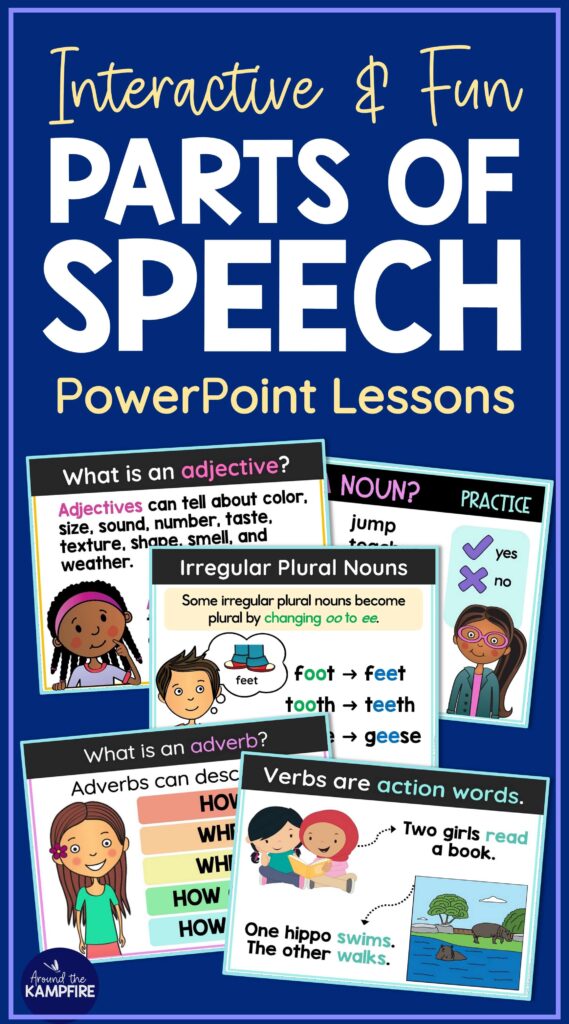
For more teaching ideas and grammar activities, visit these posts:
9 Parts of Speech Activities for 2nd Grade
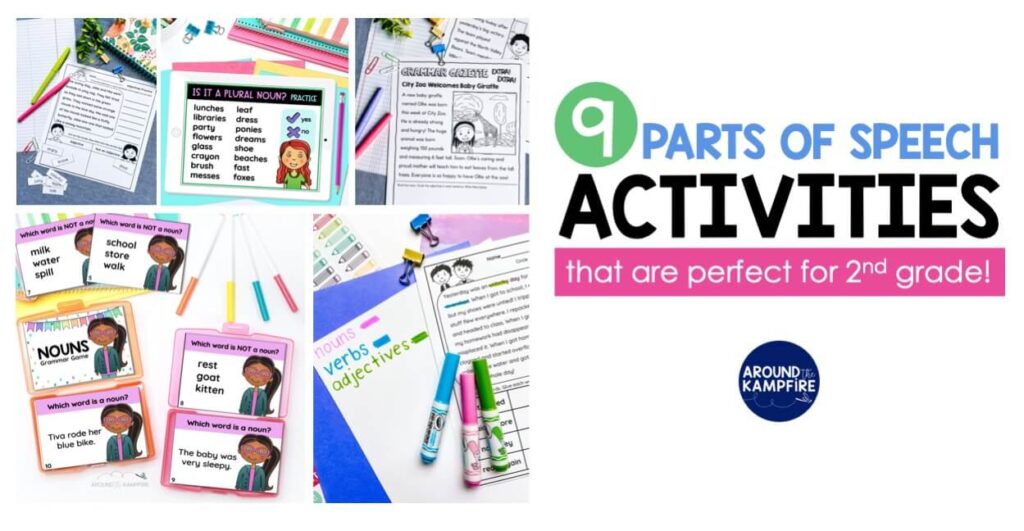
8 Ways to Differentiate Grammar Activities & Reach All Learners

7 Easy Ways to Teach Contractions in 2nd Grade
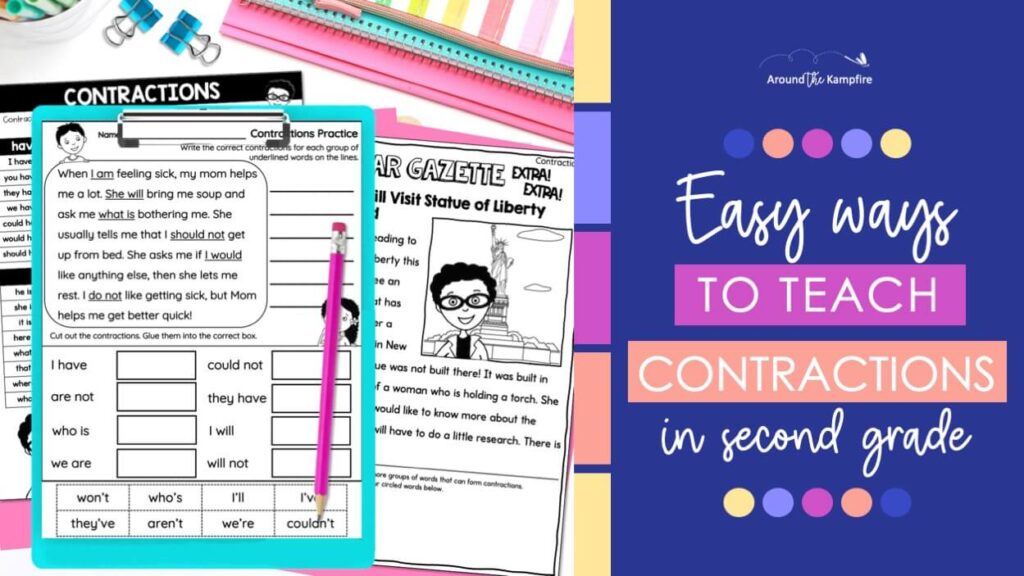
Share this:
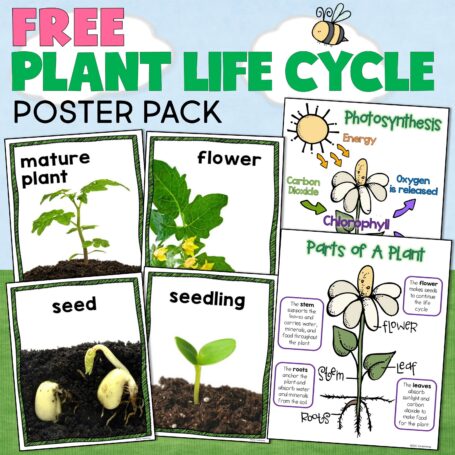
Plant Life Cycle Poster Pack
Get a FREE plant life cycle poster pack plus parts of a plant and photosynthesis posters to add to your science reference wall!
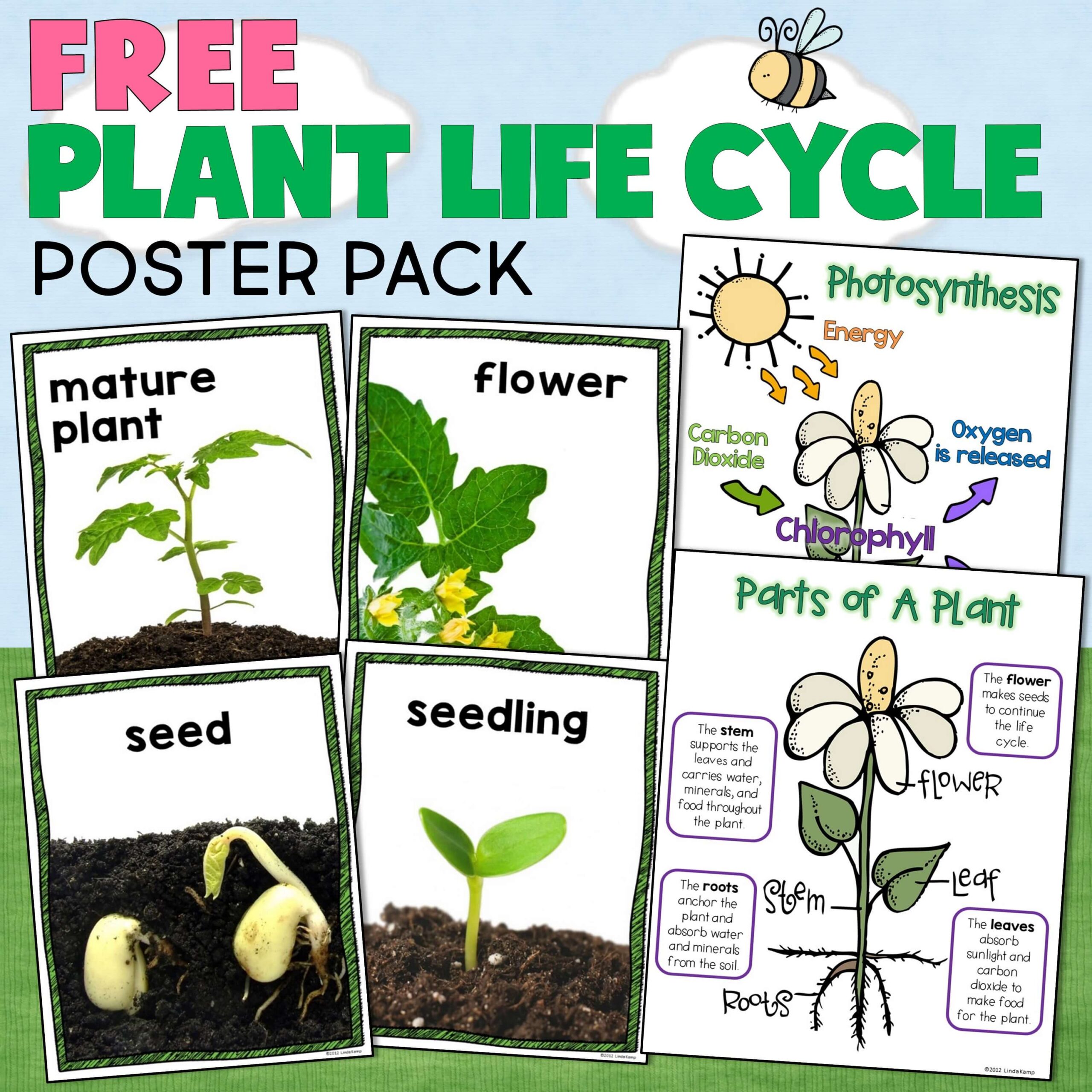
You May Also Enjoy These Posts

Reader Interactions
Leave a comment cancel reply.
Your email address will not be published. Required fields are marked *
Notify me of new posts by email.
Hello Friends
I’m Linda Kamp, a 20 year primary grade teacher with a passion for creating educational materials that excite students and make learning fun! I'm so glad you're here!

- International
- Schools directory
- Resources Jobs Schools directory News Search
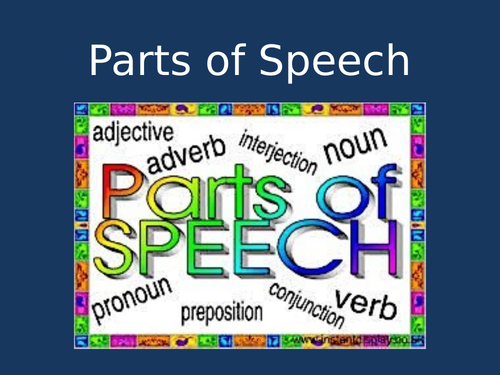
Parts of Speech PowerPoint
Subject: English
Age range: 11-14
Resource type: Lesson (complete)
Last updated
8 February 2022
- Share through email
- Share through twitter
- Share through linkedin
- Share through facebook
- Share through pinterest

Teaching parts of speech? Help your students reach proficiency with this comprehensive, instructional 21-slide PowerPoint. Presentation addresses all eight parts of speech, including: nouns, verbs, pronouns, prepositions, adjectives, adverbs, conjunctions, and interjections - with examples and kid-friendly pictures.
Assess your students with a formative/summative review that will let you know their comprehension level. Easy for you - engaging for them!
Tes paid licence How can I reuse this?
Get this resource as part of a bundle and save up to 17%
A bundle is a package of resources grouped together to teach a particular topic, or a series of lessons, in one place.
Parts of Speech Bundle
Teaching parts of speech? Teach, practice, and assess this important literacy skill with the Parts of Speech PTA Skills Bundle! The PTA Skills Bundle includes three research-based, best practice products that allow for instruction, practice, and assessment: PowerPoints - 22 slides Task Cards - 40 Task Cards Assessment - 30-question test with answer key About PTA Skills Bundles: The Guaranteed-To-Succeed PTA Skills Bundles includes three research-based, best practice products (PowerPoint, Task Cards, and Assessment) that allow for instruction, practice, and assessment – the three most important components of your lesson. PTA Bundles are an all-inclusive easy way to teach skills and concepts while reaching 100% student engagement and proficiency in no time. Here’s how it works: 1) You TEACH the skill with an easy-to-understand, comprehensive instructional PowerPoint. 2) Students PRACTICE the skill as they review the content with high yield Task Cards that generate active engagement. 3) You ASSESS the skill with a Common Core-aligned assessment that will let you know in no time who is advanced, proficient, basic, and below basic. Need more products for all your literacy lessons? Check out the PTA ELA Skills Jumbo Bundle - Volume 1 and PTA ELA Skills Jumbo Bundle - Volume 2 for an entire year of resources! 10 Benefits of the PTA Skills Bundle: ➢PTA Bundles are instructional time-friendly! ➢PTA Bundles are perfect for standout evaluations. You’ll shine as your evaluator commends your use of materials, creativity, content, and assessment. ➢PTA Bundles are minimal prep work…it’s all there! ➢PTA Bundles include Common Core-aligned assessments will let you know in no time who is advanced, proficient, basic, and below basic in this important ELA skill. ➢PTA Bundles are time savers…they last for years! ➢PTA Bundles include research-based high yield strategies that keep students actively engaged. ➢PTA Bundles are super sub friendly…Keep them learning even when you’re not there! ➢PTA Bundles have built in standardized test prep, so no need to stress come spring! ➢PTA Bundles make collaboration easy. Share the wealth of your knowledge and resources with your colleagues the easy way. ➢PTA Bundles are Easy for you – Engaging for them!! Add PTA Skills Bundles to your teaching library today!
Your rating is required to reflect your happiness.
It's good to leave some feedback.
Something went wrong, please try again later.
This resource hasn't been reviewed yet
To ensure quality for our reviews, only customers who have purchased this resource can review it
Report this resource to let us know if it violates our terms and conditions. Our customer service team will review your report and will be in touch.
Not quite what you were looking for? Search by keyword to find the right resource:
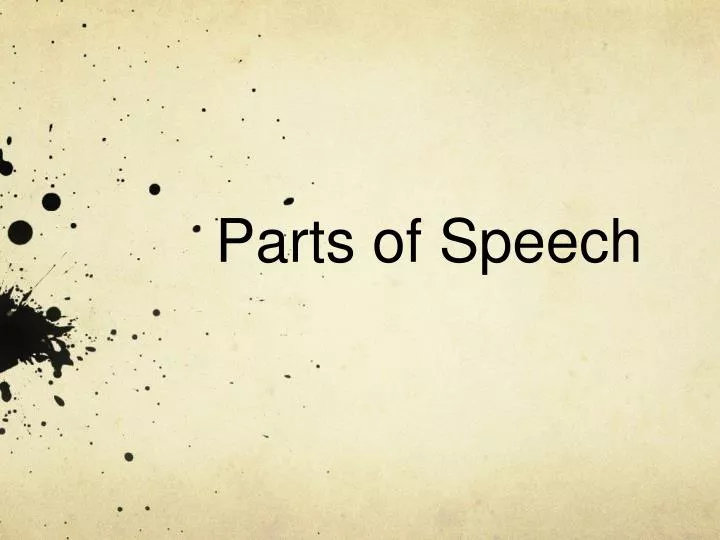

Parts of Speech
Mar 15, 2019
610 likes | 1.61k Views
Parts of Speech. Eight Parts of Speech:. Nouns Pronouns Verbs Adjectives. Adverbs Prepositions Conjunctions Interjections. NOUNS. NOUNS NAME FOUR CATEGORIES:. Person Place Thing Idea. NOUNS CAN BE:. Proper or Common Concrete or Abstract Singular or Plural Collective
Share Presentation
- action verbs
- common nouns
- abstract nouns
- collective compound nouns
- practice circle action verbs

Presentation Transcript
Eight Parts of Speech: • Nouns • Pronouns • Verbs • Adjectives • Adverbs • Prepositions • Conjunctions • Interjections
NOUNS NOUNS NAME FOUR CATEGORIES: • Person • Place • Thing • Idea NOUNS CAN BE: • Proper or Common • Concrete or Abstract • Singular or Plural • Collective • Compound
Proper & Common Nouns • Proper nouns name things that are: SPECIFIC • Leonardo DiCaprio, The White House, January, etc. • Common nouns name things that are: GENERAL • actor, house, month, etc.
Concrete & Abstract Nouns • CONCRETE NOUNS name objects that can be seen, heard, smelled, touched, or tasted. • Examples: flower, rabbit, bell, apple, pencil, etc. • ABSTRACT NOUNS name ideas, qualities, or states (of mind). • Examples: independence, pride, sadness, happiness, love, etc.
Singular, Plural, Collective & Compound Nouns • A COLLECTIVE noun refers to a group of people or things. Examples: audience, family, staff, team, crowd. • A COMPOUND noun is made up of two or more words, either combined or separate: Examples: airplane, sunlight, keyboard, rain forest, City Hall, runner-up, mother-in-law • SINGULAR nouns name only single items. • PLURAL nouns name more than one of the same item. • Examples: key or keys, stage or stages, foot or feet.
Test Yourself: NOUNSUnderline each noun in the sentences below. • 1. The Rock and Roll Hall of Fame in Cleveland draws visitors from all over the world. • 2. This unusual museum honors musicians for their creativity. • 3. Fans can spend days satisfying their curiosity by watching videos and listening to recordings.
Check Yourself: NOUNS • 1. The Rock and Roll Hall of Famein Cleveland draws visitors from all over the world. • 2. This unusual museum honors musicians for their creativity. • 3. Fanscan spend days satisfying their curiosity by watching videosand listening to recordings.
Pronouns • A pronoun is a word used in place of a noun or another pronoun. • The word that a pronoun stands for is called its antecedent (note the root “ante” = to come before). • Notice the difference between the two pronouns in the following examples: • Ray (antecedent) said he (pronoun) wanted a new pair of shoes. • Sonia (antecedent) delivered her (pronoun) famous monologue.
Pronouns are either personal or possessive. Possessive pronouns show ownership or relationship (they “possess” something). Personal Possessive First person: my, mine (pl.= our, ours) Second person: your, yours (plural is the same) Third person: his, her, hers, its (pl. = their, theirs) • First person: I, me (plural = we/us) • Second person: you (plural is the same) • Third person: he, him, she, her, it (pl. = they/them)
Let’s Practice:Write “PR” for personal, “PO” for possessive. 1. At first, Laurents intended to follow Shakespeare’s plot in Romeo and Juliet in every respect, but he later changed his mind. 2. In Shakespeare’s play, the foes are two feuding families, and in West Side Story they are two feuding street gangs. 3. She remains loyal to him as the feud worsens. 4. Both versions of the tragic story remain popular in our day.
Check Your Work:Write “PR” for personal, “PO” for possessive. 1. At first, Laurents intended to follow Shakespeare’s plot in Romeo and Juliet in every respect, but he(PR) later changed his(PO) mind. 2. In Shakespeare’s play, the foes are two feuding families, and in West Side Story they(PR) are two feuding street gangs. 3. She(PR) remains loyal to him(PR) as the feud worsens. 4. Both versions of the tragic story remain popular in our(PO) day.
Other Kinds of Pronouns • Reflexive • Intensive • Demonstrative • Indefinite • Interrogative • Relative
The “self”ish ones:Singular: myself, yourself, himself, herself, itself Plural: ourselves, yourselves, themselves Reflexive: Reflects action back upon the subject and adds information to the sentence • Donna prepared herself for a long day. • I bought myself an iced coffee. Intensive: Adds emphasis to a noun or pronoun in the same sentence • The wait itself would take hours. • Did the students themselves choose the classes?
Watch out! A common error is to use a reflexive pronoun without an antecedent in the sentence: “The planning committee appointed Ted and (me/myself).” A reflexive pronoun must have an antecedent. The answer is “me.”
Demonstrative Pronouns Remember: Demonstrative pronouns “demonstrate” things in time or space. • This is my house. • The people at the front of the line will get better tickets than those at the end. • Point out specific persons, places, things, or ideas. They allow you to indicate whether the things you are pointing out are relatively near in time or space or farther away. • Demonstrative pronouns are: this, these, that, and those.
Indefinite Pronouns Do not refer to a specific person, place, or thing. They usually do not have antecedents: • “Many of the fans had arrived at 6 a.m.” Some pronouns can also function as adjectives: • “Several people had to wait in the rain.” (adjective) • “Several of the fans waited anxiously in line.” (pronoun) Indefinite Pronoun list: • Singular: another, anybody, anything, each, either, everybody, everyone, everything, much, neither, nobody, no one, nothing, one somebody, someone, something • Plural: both, few, many, several • Singular or Plural: all, any, more, most, none, some
Interrogative and Relative Pronouns An interrogative pronoun asks a question or “interrogates.” • What is your favorite song? • Interrogative pronouns: who, whom, whose, which, what. A relative pronoun is used to introduce subordinate clauses. • The seats that the students asked for were unavailable. (“seats” is the antecedent) • Relative Pronouns: who, whom, whose, which, that.
Compare: DRAFT: • The girl waited for someone to ask her to dance. She decided to ask a boy if he would like to dance with her. REVISION: • The girl, who had been waiting for someone to ask her to dance, asked a boy if he would like to dance with her. • ** Relative pronouns can be used to combine sentences.
Let’s Practice:Underline and name each pronoun, double underline its antecedent (if it has one). 1. What is the best way to get good seats for a concert? 2. Someone gets up before dawn in order to be first in line. 3. The seats that go with the tickets may not be very good. 4. A frustrated fan might ask himself or herself why this happens. 5. All agree that the best way to find out is to ask the ticket sellers themselves. 6. People at the end of the line might get better seats than those at the front.
Check Your Work:Underline and name each pronoun, double underline its antecedent (if it has one). 1. What (Inter.) is the best way to get good seats for a concert? 2. Someone (Indef.) gets up before dawn in order to be first in line. 3. The seatsthat (Rel.) go with the tickets may not be very good. 4. A frustrated fan might ask himself or herself (Ref.) why this (Dem.) happens. 5. All (Ind.) agree that the best way to find out is to ask the ticket sellers themselves. (Inten.) 6. People at the end of the line might get better seats than those (Dem.) at the front.
Verbs A verb expresses: • an action • a condition • a state of being
Action Verbs: Transitive verbs are action verbs that require a direct object (the thing that receives the action). • Danny plays (A.V.) the trumpet (D.O.) well. Intransitive verbs are still action verbs, but they do not require a direct object. • He travels around the country with the other musicians. (no object) Action Verbs express physical or mental action: • The band marches onto the field. (physical) • The audience expects a great performance. (mental)
Linking Verbs: Link the subject to the predicate by using “to be” forms of verbs or verbs that express condition • The instruments are safe in the bus. • The students seemed bored during the long trip. • “To be” forms: is, am, are, was, were, been, being • Verbs that express condition: look, smell, feel, sound, taste, grow, appear, become, seem, remain Hint: Some verbs can be either action or linking verbs: • Action: We felt the cushions. • Linking: They felt dry. • Action: We tasted the popcorn. • Linking: It tasted salty.
Auxiliary (Helping) Verbs: Combine with verbs to form verb phrases. They may be used to express a particular tense of a verb or to indicate that an action is directed at the subject. • The stadium is filled to capacity. • We should save a seat for Jeff. Common Auxiliary Verbs: • Is, am, are, was were, can, have, may, might, must, shall, should, will, would. • Some of these auxiliary verbs can also be used as main verbs. Compare: • Kelly has a pair of Conga drums at home. (main) • She has practiced her drumming all summer. (auxiliary)
Let’s Practice: Circle action verbs, box linking verbs, and underline helping verbs in the following paragraph. Every fall, people from across the country visit New York City for the big Thanksgiving Day parade. Even on cold days when strong winds or light rain might scare away spectators, the parade is on schedule. The crowd lines the parade route and will stay until the last float has driven out of sight. As bands strut down Broadway, drum majors pound their drums. Giant balloons of familiar characters are overhead. For young children, the parade remains an eventful experience and becomes a fond memory in their lives.
Check Your Work: Every fall, people from across the country visitNew York City for the big Thanksgiving Day parade. Even on cold days when strong winds or light rain mightscare away spectators, the parade is on schedule. The crowd linesthe parade route and willstay until the last float hasdriven out of sight. As bands strutdown Broadway, drum majors poundtheir drums. Giant balloons of familiar characters areoverhead. For young children, the parade remainsan eventful experience and becomesa fond memory in their lives.
Adjectives INDEFINITE & DEFINITE ARTICLES: • The most common adjectives are the articles a, an (indef.), and the (def.) PROPER ADJECTIVES are formed from proper nouns. They are capitalized and often end in –n, -an, -ian, -ese, and -ish. • American artists perform in international countries. • Japanese crowds fill Yokohama Station. Modify or limit the meaning of a noun or pronoun. Adjectives tell: • what kind: famous song, squeaky noise, green light • which one: this star, that way, these words • how many: one dollar, three tenors, several years • how much: some music, more room, less energy
Don’t overdo it! Fresh, original adjectives sharpen your writing, but be careful not to clutter your writing with unnecessary descriptions. • Explain why the adjectives below can be omitted: gentle breeze tall skyscraper happy smile
Let’s Practice: Underline each adjective (do not include articles) and circle the word it modifies. 1. Karaoke became a major trend in Japan. 2. The machine is a Japanese invention. 3. Years ago, American television featured shows in which people sang along with a chorus. 4. Powerful speakers play background music. 5. The real purpose is to have fun rather than to give a fabulous performance.
Check Your Work: 1. Karaoke became a majortrend in Japan. 2. The machine is a Japaneseinvention. 3. Yearsago, Americantelevision featured shows in which people sang along with a chorus. 4. Powerfulspeakers play backgroundmusic. 5. The realpurpose is to have fun rather than to give a fabulousperformance.
Adverbs Adverbs modify: • Verbs, adjectives, or other adverbs • We instantlyrecognized (verb) Beethoven’sFifth Symphony. • The famous notes rang out quiteclearly. (adverb) • The orchestra waited until the auditorium grew completely quiet. (adjective) Adverbs answer: • Where: The orchestra stopped here during a national tour. • When: Will they be returning soon? • How: Everyone played magnificently. • To what extent: The auditorium was completely full.
Commonly Used Adverbs • Not all words ending in –ly are adverbs; for example, “friendly” and “costly” are adjectives. • Other commonly used adverbs: afterward, already, also, back, even, far, fast, forth, hard, instead, late, long, low, more, near, next, not, now, often, slow, sometimes, still, straight, then, today, tomorrow, too, yet. Many adverbs are formed by adding –ly to adjectives: • frequent = frequently, • true = truly, • extreme = extremely, • possible = possibly. Be careful to note the spelling changes.
Intensifiers Common Intensifiers: • extremely, just, more, most, nearly, only, quite, rather, really, so, somewhat, too, truly, very. Watch Out! • Intensifiers such as very, rather, and really are overused in casual conversation. In formal writing, they can weaken sentences. Most of the time, it is better to leave them out. An intensifier is an adverb that defines the degree of an adjective or another adverb. Intensifiers always precede the adjectives or adverbs they are modifying: • We were rather surprised that classical music is very popular.
Let’s Practice: Underline each adverb. 1. Beethoven tirelessly devoted himself to his music. 2. He often worked late. 3. The composer was terribly shocked to realize that he was losing his hearing when he was in his late twenties. 4. It finally became so severe that Beethoven could not hear his own music.
Check Your Work: 1. Beethoven tirelessly devoted himself to his music. 2. He often worked late. 3. The composer was terribly shocked to realize that he was losing his hearing when he was in his late twenties. 4. It finally became so severe that Beethoven could not hear his own music.
Prepositions A preposition shows the relationship between a noun or pronoun and another word in a sentence. • The sounds of a jazz band filled the kitchen. • The music was coming from a radio. Commonly Used Prepositions: • About, above, across, after, against, along, among, around, as, at, before, behind, below, beneath, beside, between, beyond, by, despite, down, during, except, for, from, in, inside, into, like, near, of, off, on, onto, out, outside, over, since, through, throughout, to, toward, under, underneath, until, up, upon, with, within, without.
Compound Prepositions . . . Are prepositions that consist of more than one word: • Jazz legend Louis Armstrong sang in addition to playing the trumpet. • Some singers use only their voice instead of instruments to create music. Commonly Used Compound Prepositions: • According to, aside from, because of, by means of, in addition to, in front of, in place of, in spite of, instead of, on account of, out of, prior to.
Prepositional Phrases . . . • consist of a preposition and its object, and any modifiers of the object. The object of a preposition is the noun or pronoun that follows a preposition. • Prepositional phrases often express relationships of location (by, near), direction (to, down), or time (before, during). • Many early jazz bands played in New Orleans. (Location) • Musicians traveled to other large cities. (Direction) • During the 1920s, jazz swept the country. (Time) • ** A sentence may contain more than one prepositional phrase. Each preposition has its own object.
Let’s Practice: Underline the prepositional phrase and circle the object of the preposition. 1. Jazz is a modern form of music. 2. Among these influences are gospel and the blues. 3. Rhythms from West Africa are also part of jazz’s heritage. 4. In an improvisation, a musician plays notes of his or her own invention.
Check Your Work: 1. Jazz is a modern form ofmusic. 2. Among these influences are gospel and the blues. 3. Rhythms fromWest Africaare also part of jazz’s heritage. 4. In an improvisation, a musician plays notes of his or her own invention.
A Few Things to Note … It is not considered proper to end a sentence with a preposition. Wrong: • Alaska is a hard state to live in. • He finally discovered the great inner strength he was blessed with. • She is the girl I got the gift from. • Don’t confuse a prepositional phrase with an infinitive phrase: “to other cities” vs. “to hear the concert” Which is it??? • She is going to the concertto hear her favorite band perform.
Conjunctions Coordinating Correlative Subordinating Conjunctive Adverbs
A conjunction connects words or groups of words. Coordinating Correlative Word pairs that serve to join words or groups of words. You will not only hear your favorite song but also see the performer. Either the music or the visual images will grab your attention. both . . . and either. . . or neither . . . nor whether . . . or not only . . . but also Connect words or groups of words of equal importance in a sentence: • Sonia and her friends watched the video. • The action began on a beach, but the scene changed quickly. Remember FANBOYS: for, and, nor, but, or, yet, so
More Conjunctions Subordinating Conjunctive Adverbs Really an adverb, but functions like a conjunction in that it is used to express relationships between independent clauses: The transistor radio contributed to the rise of rock and roll; similarly, the introduction of cable television helped launch music videos. Accordingly, also, besides, consequently, finally, furthermore, hence, however, instead, nevertheless, otherwise, similarly, still, therefore, thus Introduce subordinate clauses and join them to independent clauses • The band waited while the director checked the lighting. • Although music videos are short, they are expensive to produce. • After, although, as, as if, as though, because, before, even though, if, in order that, provided, since, so that, than, unless, until, when, where, whereas, while
Let’s Practice: Underline the conjunctions and conjunctive adverbs 1. The face of the music industry changed when cable television came along and began running music videos constantly. 2. Singers and bands began to make more and more videos; consequently, viewers turned in to watch. 3. According to critics, performers were creating works that were not only visually but also musically insubstantial. 4. It’s been roughly twenty years since videos first appeared.
Check Your Work: 1. The face of the music industry changed when cable television came along and began running music videos constantly. 2. Singers and bands began to make more and more videos; consequently, viewers tuned in to watch. 3. According to critics, performers were creating works that were not only visually but also musically insubstantial. 4. It’s been roughly twenty years since videos first appeared.
INTERJECTIONS An interjection is a word or a phrase used to express emotion.
Interjections A strong interjection is followed by an exclamation point: Yikes! Our project is due tomorrow. A mild interjection is set off by commas: Well, where should we start? Examples: wow, gee, hey, ouch, aha, boy, hooray, aw, eek, unbelieveable Interjections add realism to your writing, particularly in dialogue in short stories or essays. Notice the sense of guilt conveyed below by the interjection: • “If Jim doesn’t kill me,” she said to herself, “before he takes a second look at me, he’ll say I look like a Coney Island chorus girl. But what could I do – oh, what could I do with a dollar and eighty-seven cents!” • -- O. Henry “The Gift of the Magi”
Choose the better interjection: 1. (Great!/ Oh, no!) We’re almost finished with our multimedia presentation. 2. (Wow,/Well,) we still have to choose the background music for the introduction. 3. (Hey!/All right,) I forgot about that! 4. (Here,/Ouch,) listen to this. 5. (Alas!/Wow!) I think that’s perfect.
- More by User
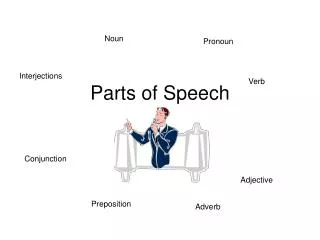
Noun. Pronoun. Parts of Speech. Interjections. Verb. Conjunction. Adjective. Preposition. Adverb. 1. Nouns. A noun is a name; nouns name persons, animals, places, things, collections or groups of persons or things, qualities, conditions, actions, processes, and ideas. Examples:
1.26k views • 55 slides

Parts of Speech. Bruce Bennett STUS 011 Basic English. Why Learn Parts of Speech?. Why Learn Parts of Speech?. They are the building blocks of English grammar. Understanding and applying a process is learning to learn. It is a foundation to improve your writing. The Eight Parts of Speech.
1.06k views • 38 slides

Parts of Speech. “Bucket of DOOM” Test Review. Rules of the Game. Each team will have a chance to answer its own question. If the answer is incorrect, there is no opportunity to earn points. The correct answer will be given to review. Rules of the Game.
1.24k views • 81 slides

Parts of Speech. Preparing for your upcoming project. Standard for Mastery. LITERACY: L7.4 Determine or clarify the meanin g of unknown and multiple-meaning words or phrases. Use sources to determin e pronunciations, parts of speech , etc. Sooooooo …how many parts of speech are there?. 2.
659 views • 12 slides

Parts of speech
Parts of speech. Content words Refers to objects ,actions or properties eg : president ,report etc. Open class words Not finite Classified into nouns ,verbs and properties Function Words Inform us how content words relate to each other eg : is, of, the etc Closed class words Finite set .
258 views • 3 slides

Parts of speech. Special uses of numerals. Dates. 1. The year : 1987 → nineteen hundred and eighty - seven → nineteen eight - seven ; 1066 → ten sixty - six ; 1900 → nineteen hundred ; 2000 → the year two thousand
278 views • 15 slides

Parts of Speech. Editing I. Grammar. Grammar refers to the relation of words. The rules of grammar reflect patterns of speech and writing of the educated elite. What makes grammar fun is knowing the rules and when to break them.
1.08k views • 82 slides

Parts of Speech. 7. C. 1.3 Identify all parts of speech and the types and structures of sentences. Nouns. Nouns name people, places, and things Common nouns are names of common things like _________, _________ , and _________ .
224 views • 10 slides

parts of speech
parts of speech. How we speak ?. Basic part of speech. larynx. Basic part of speech. Nose . Basic part of speech. lips. Basic part of speech. Tongue . Basic part of speech. Glottal .
409 views • 7 slides

PARTS OF SPEECH
PARTS OF SPEECH. In the English language. there are eight parts of speech: Nouns Verbs Pronouns Adjectives Adverbs Conjunctions Prepositions Interjections. Every word in a sentence has a job to do!. 1. Noun: person, place, thing. Person: Mr. Garcia likes to eat spinach.
831 views • 15 slides

Parts of Speech. Noun Pronoun Verb Adverb Adjective Preposition Conjunction Interjection. Noun. A noun is a word that names a person, place, a thing, or an idea in your writing. Person: students, secretary, Bob, Janet Place: city, sky, Texas, FCMS
458 views • 16 slides

Parts of Speech. Pronouns. Basic Definition. A pronoun is a word that is used in place of a noun or another pronoun. Most pronouns have an antecedent An antecedent is the word the pronoun replaced Ex: Ray said he wanted musical talents to audition for the play Pronoun: He
218 views • 11 slides

Parts of Speech. Prepositions. A word that shows the relationship of a noun or a pronoun to another word. The other word is called the Object of the Preposition Ex. It was underneath the table. Ex. He went through the tunnel. Prepositions.
346 views • 10 slides

Parts of Speech. Nouns. A noun is a person, place, thing or idea. Nouns are the subject of the sentence. Examples: Matt is a pro-golfer. The bakery has fresh baked cookies. Children were playing outside. Types of Nouns. Proper A noun that names a specific person, place or thing.
206 views • 8 slides

Parts of Speech. By Ryan Ledbetter. Verbs. A verb is a word that describes an action or a state of being, like wiggle , walk , run , jump , be , do , have , or think. Adjective. Adjective is describing word. An adjective is a word that describes something (a noun or a pronoun).
243 views • 10 slides

PARTS OF SPEECH. TAUGHT BY: PROFESSOR OF ENGLISH. LAY SENGHOR 016 940 392. I. HE. SHE. THEY. IT. What is a pronoun?. Definition: A pronoun is a word used instead of noun or name, to avoid the repetition of it.
1.73k views • 156 slides

Parts of Speech. What does that mean?. Parts of Speech. Each word in a sentence performs a basic function or task. Words perform four basic tasks: they name, modify, express action or state of being, or link. There are 8 Different Parts of Speech:.
581 views • 51 slides

Parts Of Speech
Parts Of Speech. Bellwork. What do you remember? Day 1. See if you can remember the definition for each of the parts of speech: 1. Noun 6.Prepostion 2. Verb 7. Conjunction 3. Adjective 8.Interjection 4. Adverb 5. Pronoun. Day 2.
178 views • 14 slides

Parts of Speech. It is important to understand that every word in a sentence has a job to do, a role in the sentence. Parts of Speech FOLDABLE!. This foldable will help you learn the parts of speech and their jobs.
200 views • 17 slides

PARTS OF SPEECH (Free Download)

8 comments:

i just downloaded it so haven't time yet to study it.
This is a great inspiring article.I am pretty much pleased with your good work.You put really very helpful information. Keep it up. Keep blogging. Looking to reading your next post. Chainsaw Parts
Very good points you wrote here..Great stuff...I think you've made some truly interesting points.Keep up the good work. ពាក្យសុំទិដ្ឋាការសហរដ្ឋអាមេរិក
Very good points you wrote here..Great stuff...I think you've made some truly interesting points.Keep up the good work. ពាក្យសុំទិដ្ឋាការកាណាដាតាមអ៊ីនធឺណិត
Buy Mephedrone powder online With over 15 years of experience exclusively servicing patients, we are experts at what we do and look forward to serving you. Where to buy Crystal Meth online
Nembutal for sale online Fentanyl for sale online Mephedrone for sale online We sell high quality products at good rates and at the best prices. Polvere Di Anfetamine In Vendita Online

https://pentobarbitalgroup.com/product/buy-nembutal-online/buy-nembutal-pills/ Nembutal peaceful pills for sale also known as pentobarbital pills were first introduced in the 1900s as a central nervous system depressants and when it was synthesized in the 1920s it became widely recognized because of its sedative and hypnotic properties. At Pentobarbital Group, you can now buy pentobarbital pills and make the best use of them for your health benefits. Connect with us today and buy nembutal pills at affordable rates. Check out more How to buy nembutal pills online Check out more How to buy nembutal pills online
https://everydaychemshop.com/it/product/acquistare-pentobarbital-sodio-liquido-orale-online/ Wir achten darauf, dass wir die Qualität und Reinheit unserer Produkte erhalten. Check out more Acquista pentobarbital sodico per via orale online Check out more Acquista pentobarbital sodico per via orale online
Follow Us on Facebook
- Budget of Work (BOW)
- Bulletin Board Display
- CERTIFICATES
- Classroom Decorations
- Colors Worksheets
- COT Materials
- Curriculum Guides (CG) K-12
- Daily Lesson Logs
- DepEd Advisory
- DepEd FREE Webinars
- DepEd Latest Updates
- DepEd Official Statement
- DepEd Opinion
- DepEd Order
- DepEd Press Release
- DepEd Seminars
- Detailed Lesson Plans (DLP)
- Diagnostic Tests
- EduTech TIPS
- Enhanced Basic Education Enrollment Form
- FREE CPD Units
- FREE Online Course
- Free Scholarship for Teachers
- FREE Training for Teachers
- Good Parenting
- Individual Learning Monitoring Plan
- INSET Training Design & Matrix
- Inspiring Stories
- Instructional Materials
- Job for Teachers
- Learners Materials
- Lesson Exemplars (MELC Based)
- Math Worksheets
- Monthly Celebrations
- Other Materials
- Periodical Tests (PT)
- Reading Articles
- Reading Materials
- RPMS Portfolio
- Scholarship Programs
- School Forms
- Self Learning Modules (SLMs)
- Seminar-Training for Teachers
- Teacher's Forms
- Teacher's Guide (TG)
- Teacher's Materials
- Teacher's Official ID
- Teacher's Program
- Teachers Opinion
- The Magna Carta for Public School Teachers
- Weekly Home Learning Plan
- Writing Worksheets
Recent Posts
Popular posts.

- Privacy Policy
- Terms and Conditions

- My presentations
Auth with social network:
Download presentation
We think you have liked this presentation. If you wish to download it, please recommend it to your friends in any social system. Share buttons are a little bit lower. Thank you!
Presentation is loading. Please wait.
The 8 Parts of Speech Grade 10 English.
Published by Barnaby Turner Modified over 6 years ago
Similar presentations
Presentation on theme: "The 8 Parts of Speech Grade 10 English."— Presentation transcript:
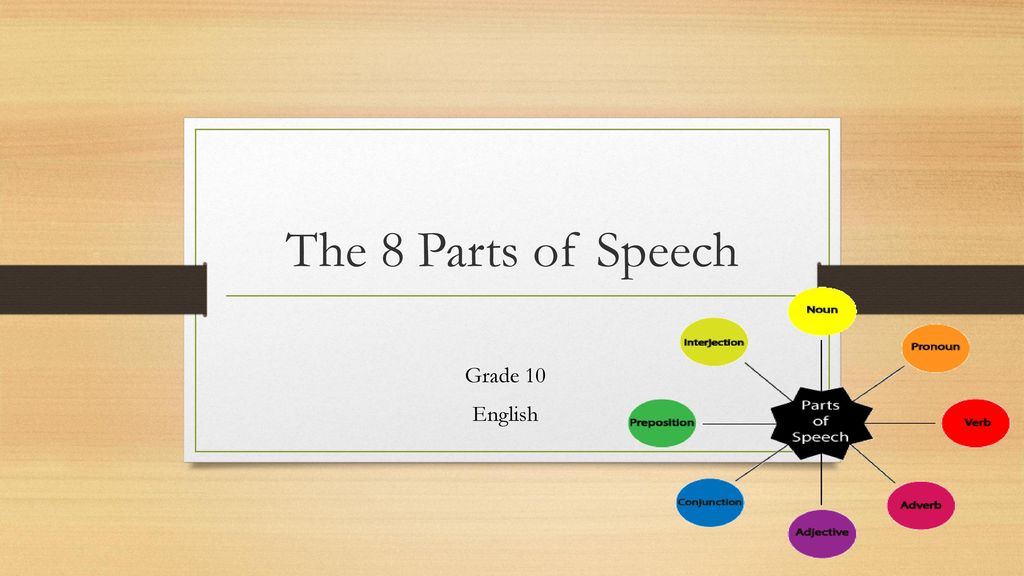
Bellringers English II.

Grammar Jeopardy Pronoun Edition Grammar Jeopardy I / Me There/ Their/ They’re It’s / Its Whose / Who’s He/ Him She/ Her $100 $200 $300 $400 $500 $100.

Pre-test Parts of Speech: The Building Blocks of Grammar PRE-TEST.

Parts of Speech Jeopardy

Grammar Quiz.

PARTS OF SPEECH GRAMMAR. 8 PARTS OF SPEECH 1)Noun 2) Pronoun 3) Verb 4) Adjective 5) Adverb 6) Preposition 7) Conjunction 8) Interjection.

PARTS OF SPEECH LANGUAGE ARTS GRADE 4 Courtney Wolfberg.

You will need: 1-2 pieces of notebook paper A pen or pencil A highlighter.

Part of Speech PowerPoint Presentation

Parts of Speech Review. A noun is “ a word that names a person, a place, a thing, an idea, a quality, or a characteristic” (Writer’s Choice: 818). A noun.

What are the five parts of speech? In this tutorial you will be reviewing the five parts of speech to give me an idea of what we need to cover this school.

The Parts of Speech By Ms. Walsh The 8 Parts of Speech… Nouns Adjectives Pronouns Verbs Adverbs Conjunctions Prepositions Interjections Walsh Publishing.

6 TH GRADE LANGUAGE EXAM REVIEW PARTS OF SPEECH.

The Parts of Speech The 8 Parts of Speech… Nouns Adjectives Pronouns Verbs Adverbs Conjunctions Prepositions Interjections.

PARTS OF SPEECHPARTS OF SPEECH. NOUNS Definition: A noun names a person, place, or thing. Example: John, computer, honesty, school A singular noun is.

The Great Eight Chelsea Gilmore NOUN A person, place, or thing, or idea can be the subject of the sentence-SN the “doer” of the action or who/what.

GoBack definitions Level 1 Parts of Speech GoBack is a memorization game; the teacher asks students definitions, and when someone misses one, you go back.

PARTS OF SPEECH ANSWER: QUESTION: HOW MANY PARTS OF SPEECH ARE IN THE ENGLISH LANGUAGE? A.4 B.6 C.8.

The Building Blocks of Good Writing

Parts of Speech Melinda Norris Start. How to navigate through this tutorial At the bottom of each page, you will see buttons that allow you to move to.
About project
© 2024 SlidePlayer.com Inc. All rights reserved.
An Easy Way to Introduce Yourself When You Start a Presentation Fearless Presentations
For the last few episodes, I've shown you how to start a speech, how to design a speech, and, last week, how to end a speech. But before we end this series, I wanted to cover one often-overlooked part of creating a compelling presentation. Today, I'm going to show you how to introduce yourself to an audience so that your presentation starts off on the right foot. Remember, when you are speaking to a new audience, they don't know who you are, what you want from them, or why in hell they should even listen to you. In this short session, I'll give you one of the best ways to establish your credibility to a new audience without sounding like you're bragging. In fact, if you do this really well, your audience will want to pay attention to the rest of your speech.
- More Episodes
- © 2024 Fearless Presentations

IMAGES
VIDEO
COMMENTS
Parts of Speech. Grammar Review/ Introduction. 8 parts of speech. Noun Pronoun Verb Adjective Adverb Conjunction Preposition Interjection. What are parts of speech?. Definition: words that label the various kinds of words in a sentence Slideshow 5361530 by damian ... An Image/Link below is provided (as is) to download presentation Download ...
They all describe a state of being and are therefore verbs. Example: Sam is nice. What about odd ones like "will", "shall", "could", "would", "must", "may", "might", etc? Yes, these are also verbs. They are called "modal verbs" and are usually seen helping another verb along. Example: I think we will go to the party.
Adjective required as you will come to each page as you progress 4. Verb through the PowerPoint. 5. Adverb 6. Conjunction 7. Preposition 8. Interjection. 4. A noun is a person, place, The bakery has thing, or idea. fresh baked goods. Nouns are the subject of a sentence. Kylie is a pro-golfer.
Presentation of english (parts of speech) Dec 21, 2011 •. 362 likes • 219,086 views. Kunnu Aggarwal. Follow. Education Technology. 1 of 19. Presentation of english (parts of speech) - Download as a PDF or view online for free.
17 Parts of speech English ESL powerpoints. A Power point presentation on parts of speech.It will help to revise the parts of speech and can be used as a test in the classroom.It is suitable for all types of s... A presentation on parts of speech and collocations. Teh following PPT is about language words (parts of speech).
This is best filled in as a class, with the teacher prompting what part of speech is needed next. It can also be printed out and given to students as a challenge to fill in ... 583 uses. A selection of English ESL parts of speech (aka word classes, e.g. nouns, verbs, adjectives, adverbs) ppt slides.
8 main parts of speech explained with homework. For B1-B2 Levels. There are eight main parts of speech (also known as word classes): nouns, pronouns, adjectives, verbs, adverbs, prepositions, conjunctions and interjections. Most parts of speech can be divided into sub-classes. Prepositions can be divided into prepositions of time, prepositions of place etc. Nouns can be divided into proper ...
Parts of Speech PowerPoints & No-Prep Activities. These PowerPoints are part of a complete series of second grade grammar units. Each unit includes lessons and activities that are no-prep, ready to use, and easy to implement. Each grammar unit includes everything you need to teach, practice, and assess all 2nd grade grammar and language skills ...
Presentation addresses all eight parts of speech, including: nouns, verbs, pronouns, prepositions, adjectives, adverbs, conjunctions, and interjections - with examples and kid-friendly pictures. Assess your students with a formative/summative review that will let you know their comprehension level. Easy for you - engaging for them!
Learning Objective • In this lesson, we will be learning about the 8 parts of speech. You will learn the definitions, and be able to identify the different parts of speech in examples and sentences. (Standard 3001.1.1) 1.Noun 4.Adjective 7.Conjunction 2.Verb 5.Adverb 8.Interjection 3.Pronoun 6.Preposition. Directions Click this button to go ...
8 parts of speech ppt. Mar 21, 2022 •. 4 likes • 23,229 views. Maridel Salapang. There are eight parts of speech in the English language: noun, pronoun, verb, adjective, adverb, preposition, conjunction, and interjection. The part of speech indicates how the word functions in meaning as well as grammatically within the sentence.
Parts of speech. Parts of speech. Content words Refers to objects ,actions or properties eg : president ,report etc. Open class words Not finite Classified into nouns ,verbs and properties Function Words Inform us how content words relate to each other eg : is, of, the etc Closed class words Finite set . 255 views • 3 slides
Through poetry, we learn how each Of these make up the parts of speech. 13 Parts of Speech Identify all the parts of speech in the following sentence: Yesterday we went to the cinema because John had luckily received two free tickets. 14 Key 1 yesterday - adverb we - pronoun went - verb to - preposition the - article cinema - noun because ...
Download ppt "PARTS OF SPEECH." Purpose of presentation: This presentation provides a very basic introduction to the concept of parts of speech in language. Actually, the study of parts of speech can be quite complicated and involved, but the purpose of this presentation is to give the students a working vocabulary and a way to improve their ...
This is a complete presentation on parts of speech in English language. One can download it as use it in their English language booster training or take the chunks and design worksheets from it.
Download ppt "The Eight Parts of Speech". 8 Parts of Speech 1. Nouns 2. Pronouns 3. Verbs 4. Adjectives 5. Adverbs 6. Prepositions 7. Conjunctions 8.
A part of speech (also called a word class) is a category that describes the role a word plays in a sentence.Understanding the different parts of speech can help you analyze how words function in a sentence and improve your writing. The parts of speech are classified differently in different grammars, but most traditional grammars list eight parts of speech in English: nouns, pronouns, verbs ...
Parts of Speech, English Grammar (Ppt) - Free download as Powerpoint Presentation (.ppt), PDF File (.pdf), Text File (.txt) or view presentation slides online. Scribd is the world's largest social reading and publishing site.
Oct 6, 2019 • Download as PPTX, PDF •. 22 likes • 34,269 views. A. AarushiSharma54. Part of speech- a category to which a word is assigned in accordance with its syntactic functions. In English the main 8 parts of speech are noun, pronoun, adjective, determiner, verb, adverb, preposition, conjunction, and interjection.
Download for FREE this set of PARTS OF SPEECH materials which you can use in teaching the English subject. Simply click on the download link below the image to get your FREE AND DIRECT copy. Using colorful instructional materials always gets a positive response from your class. Not only you acquire the attention of your learners but you also ...
Every word in the English language belongs to one of just eight word groups or eight parts of speech. A few of these 8 parts of speech are easy to remember - nouns, verbs, pronouns, adjectives, and adverbs. Others are a bit more difficult to identify, such as prepositions, conjunctions, and interjections. We will break down each of these 8 ...
This ppt is an introduction to help one understand the importance of grammar and how each part of speech helps to form our sentences. we make numerous of sentence on daily basis, but what we dont realise that each word use to join and form a sentence is a part of speech. Most importantly very sentence needs punctuation marks, without which the meaning of the said sentence changes
Parts of Speeach noun pronoun verb adjective adverb prepost+ion conj unction; noun is a part of speech that denotes a person, animal, place, thing, or idea Person — A term for a person, whether proper name, gender, title, or class, is a noun. Animal — A term for an animal, whether proper name, species, gender, or class is a noun.
For the last few episodes, I've shown you how to start a speech, how to design a speech, and, last week, how to end a speech. But before we end this series, I wanted to cover one often-overlooked part of creating a compelling presentation. Today, I'm going to show you how to introduce yourself to a…